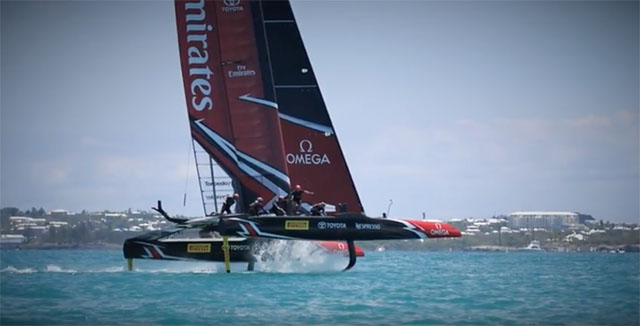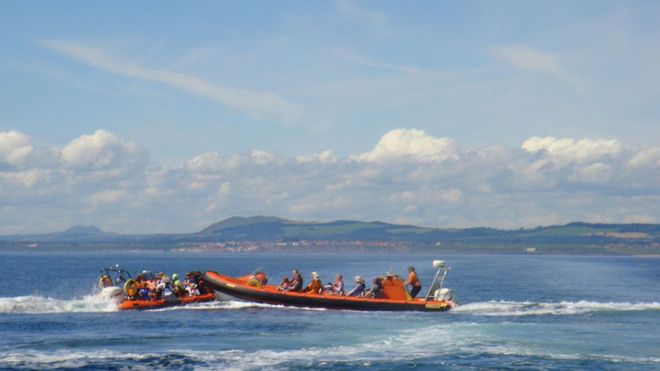The Mersey ferry, Royal Iris, hit the submerged remains of a mooring dolphin near to the entrance of the Manchester Ship Canal at Eastham in July last year
25 May 2017
The bridge team on the Royal Iris were “navigating solely by eye” when the ferry hit the submerged remains of a mooring dolphin, resulting in the evacuation of 66 passengers.
A report into the incident, released today by the Marine Accident Investigation Branch (MAIB), also reveals that the team’s focus was on a departing dredger during the ferry’s approach to Eastham locks at the entrance to the Manchester Ship Canal.
“The adjustment of the ferry’s usual approach to Eastham lock to take account of the departing dredger reduced the margin for navigational error,” the MAIB states in the report.
“The bridge team’s attention was focused on the dredger, which led to reduced spatial awareness.”
The incident at 12.54pm on 10 July 2016 resulted in both of the ferry’s engines stopping, although the crew quickly let go of an anchor.

The Royal Iris. Credit: MAIB
The ferry’s starboard engine was soon re-started but its port engine was disabled. There was damage to the port propeller, shaft, stern seal and rudder.
There was also a minor flood in the port shaft space, which was contained using onboard equipment.
The ferry was able to safely manoeuvre and make fast alongside another vessel, the Deo Gloria, on a nearby quay, where passengers disembarked.
There were no injuries and there was no pollution as a result of the incident.
In the report, the MAIB stated that the safety of passengers was a priority.
“The rapid deployment of the anchor, the re-starting of the starboard engine and the discovery and containment of the flood in the port shaft space were positive actions that safeguarded the vessel and its passengers,” said the report.
“The passengers were kept informed of the situation and, although there was no immediate risk to Royal Iris, their disembarkation onto Deo Gloria at the earliest opportunity indicates that passenger safety was at the forefront of the master’s considerations.”
Continued below…
Three British sailors rescued after their yacht collides with a whale
Three British sailors were forced to abandon their yacht after it hit a whale around 350 miles north east of…
America’s Cup: Emirates Team NZ back on the water following crash with Land Rover BAR
With days to go, Emirates Team New Zealand is now back on the water after a collision with Land Rover…
New boat safety advice after woman crushed in collision in Scotland
The Marine Accident Investigation Branch has issued new boat safety advice following an investigation into a crash between two RIBS…
The MAIB investigation also found that the information shown on the United Kingdom Hydrographic Office (UKHO) chart of the area with regard to the status of the dolphins was inaccurate.
However, this did not contribute to the accident.
Following the incident, Royal Iris’s operator, Mersey Ferries Limited, has provided electronic chart systems on all of its vessels. It has also reviewed its safety management system to improve the navigation of its vessels.
In addition, Peel Ports Group Limited (Peel Ports), which manages this stretch of waterway, and the United Kingdom Hydrographic Office have taken steps to improve the accuracy of the charted hydrographic information they provide for the approaches to Eastham locks.
In view of the actions taken no recommendations were made by the MAIB.
11 July 2016
More than 70 people were rescued from the Royal Iris passenger ferry after it ran aground and started sinking on the afternoon of 10 July.
The grounding at Eastham, Wirral, resulted in a hole in the hull.
The vessel, which starting taking on water at the stern, was carrying 66 passengers and nine crew members.
The multi-agency rescue operation involved the New Brighton RNLI, the Merseyside Fire and Rescue Service, the Port of Liverpool Police, HM Coastguard and the North West Ambulance Service.
No one was hurt in the incident.
A spokesman for the Merseyside Fire and Rescue Service said it sent two fire engines to the scene.
A dredger, Deo Gloria, assisted in pumping out water from the ferry and took the ferry passengers on board.
Merseyside Fire and Rescue Service, with the assistance of New Brighton RNLI and a Liverpool pilot boat, Kittiwake, helped move both the Deo Gloria and the Royal Iris in to the QE2 Dock at Eastham.
A spokesman for New Brighton RNLI said: “Our lifeboat, Marine Fire One and the Kittiwake positioned themselves using their bows along the side of the ferry to ensured it kept position while it was being towed into the lock by the dredger.”
The dock gates were closed and passengers were helped to disembark from the dredger on to the quayside.
Firefighters assisted in pumping out the water from the ferry while awaiting the arrival of two further tugs.
The passengers had been booked on a day trip along the Manchester Ship Canal.
The Marine Accident Investigation Branch has now started an investigation into the incident.






